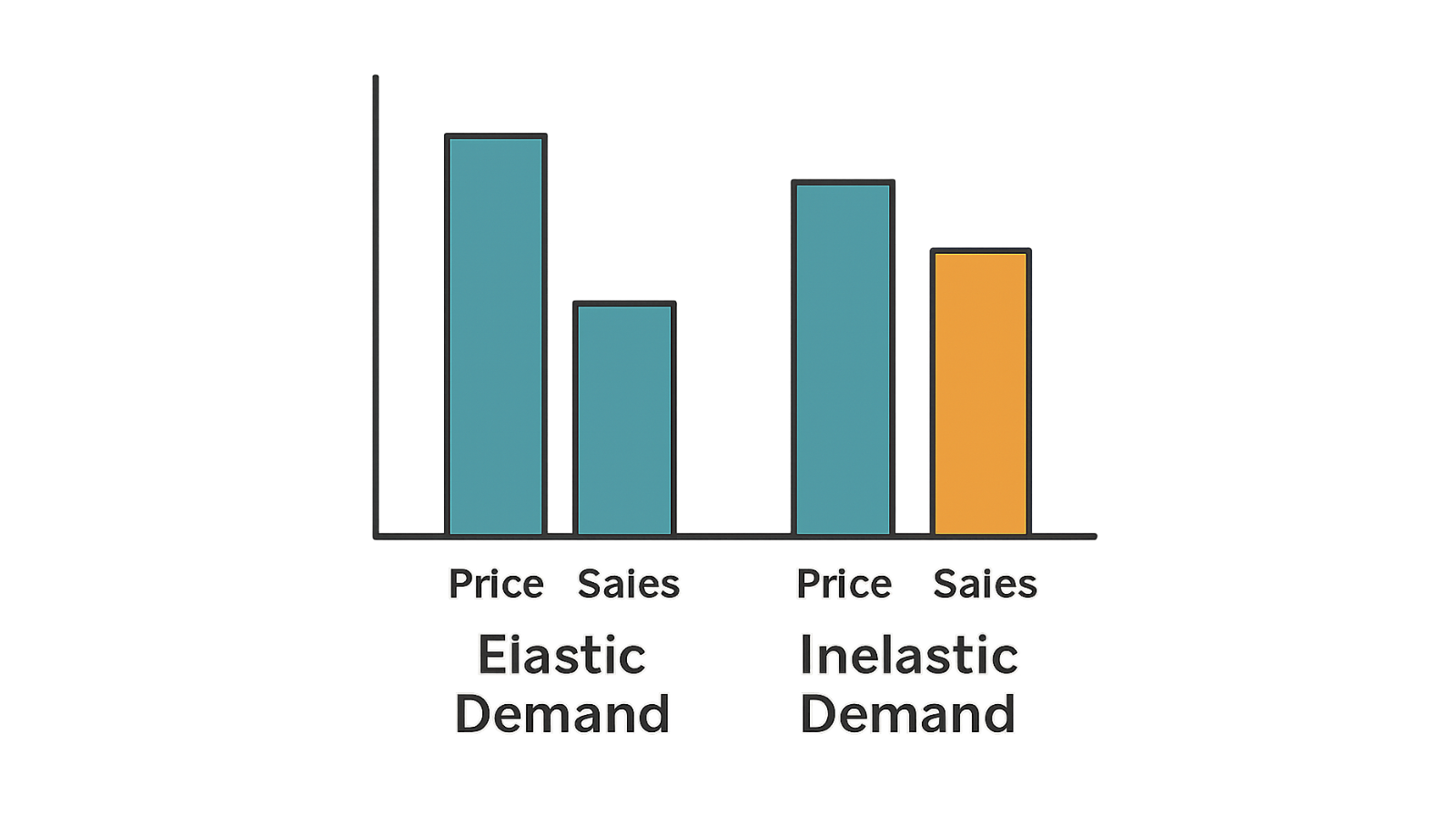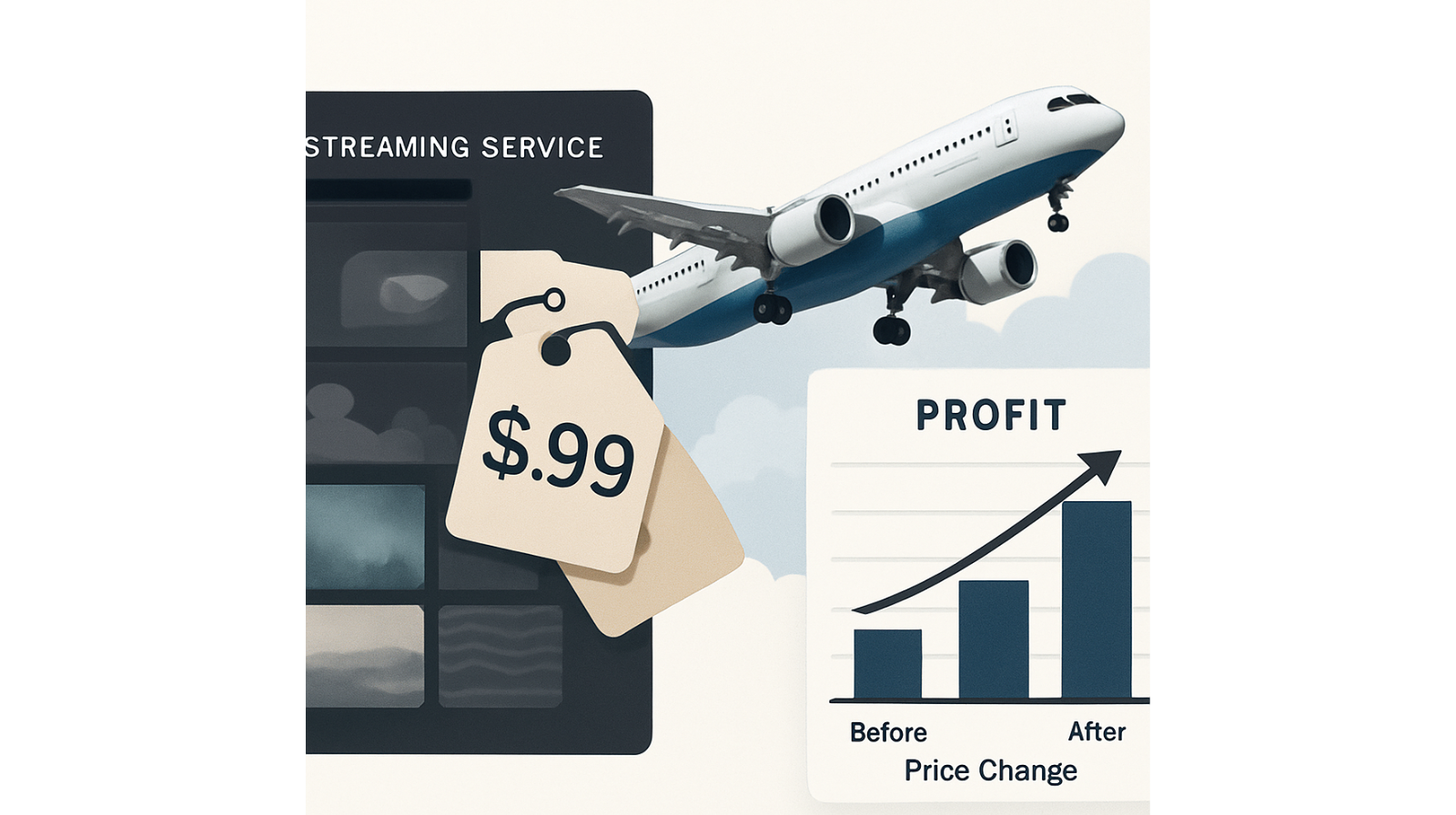Price Elasticity Explained: A Practical Guide for Managers Making Pricing Decisions

Many business leaders struggle with setting the right price for a product or service. Pricing decisions are critical since small changes significantly impact revenue and profit. One key concept that guides a smart pricing strategy is price elasticity of demand. In simple terms, price elasticity measures how price-sensitive customers respond to cost. Understanding this concept helps people managers make better decisions about pricing, product positioning, and business strategy.
What Is Price Elasticity? Simple Definition for Managers
Price elasticity of demand shows how much the quantity sold will change if the price changes. If a small price change causes a significant change in sales, demand is elastic. If a price change has little effect on sales, demand is inelastic. For example, if the price of a popular smartphone app drops 20% and downloads jump by 50%, demand is more elastic. The local gas station raises fuel prices by 20% and sales dip. Demand for fuel is inelastic (people still buy gas because they need to drive their vehicles).
Managers calculate price elasticity by looking at the percentage change in quantity sold versus the percentage change in price. In practice, many use historical sales data or run pricing experiments to estimate this. The price elasticity of demand often depends on factors like how many competitors or substitutes are available, and how essential the product is. Products with many alternatives (e.g., soft drinks or snacks) tend to have elastic demand if one brand gets too expensive, customers switch to another. Unique or essential products (e.g., a life-saving medicine or a one-of-a-kind gadget) tend to have inelastic demand; customers will keep buying even if the price goes up, up to a point.
Understanding these patterns is crucial for strategic pricing decision-making. It helps leaders predict what might happen if they raise prices or offer discounts. Will a price hike scare away customers, or will most stay because they value the product? Price elasticity provides a data-driven way to answer that.
Elastic vs Inelastic Demand: Why It Matters for Pricing
For people managers in charge of teams or product lines. Knowing about price elasticity is a practical tool for decision-making in business. Here is why it matters:
Optimizing Revenue and Profit: Price elasticity helps identify the price that maximizes revenue. If demand is inelastic, a manager may increase prices and boost profit without losing many customers. If demand is elastic, lowering the price could increase sales volume and total revenue.
- For instance, a Harvard Business Review piece notes that pricing is one of the most demanding tasks in business and that understanding elasticity is a critical element in getting it right. Managers who use elasticity insights can avoid pricing too low (leaving money on the table) or too high (driving customers away).
Informed Pricing Strategy: Aligning price with the value delivered to customers. Price elasticity analysis pairs well with value-based pricing, where prices reflect what customers are willing to pay. A value-based approach considers customer perceived value and competitor pricing. Companies that use value-based pricing set a price that matches the product's worth to the buyer. Understanding elasticity, managers can tell if their product's value is high enough that customers will tolerate a higher price. In other words, if an offer has unique value (strong brand, better features, etc.), demand might be less sensitive to price, giving you pricing power. If a product has similar options, demand will be more price-sensitive. Strategic managers might keep the price competitive or find ways to differentiate.
Strategic Decision Lens: People managers often need to make decisions on promotions, discounts, or budget forecasts. Knowing elasticity helps in planning those moves. For example, if a manager knows demand for a service is very elastic, they might run a limited-time discount to boost volume (since a lower price will attract many more buyers). If demand is inelastic, a slight price increase (with added value or improvements) could increase profit margins without a significant loss in sales. Understanding customer sensitivity allows leaders to back up their decisions with data – fostering a culture of data-driven decision-making in their teams.
Real-World Examples of Elasticity in Business
Real business examples show how price elasticity guides a more brilliant strategy:
Premium Movie Channel Case: In one case, a media company offered a premium movie channel at $9.75 per month. An analyst reviewed the price elasticity of this channel. Showing that fewer subscribers would pay if the price went up, but the revenue per subscriber would be higher. The leader, with their team, discovered that raising the price to $11.50 per month would increase monthly profit. At $9.75, the channel had about 15,000 subscribers; at $11.50, it might have a couple thousand fewer, but the total revenue was higher, and so were profits. In fact, the profit at $11.50 was around $78,000 per month, greater than the profit at the lower price. This real-world example illustrates that raising prices leads to higher profit if demand does not fall off too much.
Streaming Service Pricing: Consider the media company Netflix. In late 2024, Netflix added 19 million new subscribers in one quarter, reaching over 300 million globally. During that same period, it increased prices on its plans. However, revenue still jumped 16%, topping $10 billion in that quarter. Many customers accepted the higher subscription price because they valued Netflix's content. Netflix judged its demand to be inelastic since subscribers were willing to pay more rather than cancel the service. The result was higher revenue without a proportionate loss of users. People managers can learn from this. If we see a company delivering value, they gain a cushion to adjust prices with little pain.
Airline Tickets – Business vs. Leisure: The airline industry provides an example of different elasticity in different markets.
- Leisure travelers (vacationers) are price sensitive, while business travelers (flying for work) are less sensitive.
In fact, one study found leisure air travel demand to be about five times more sensitive to price than business travel demand. Airlines use this knowledge to set prices strategically – they often charge higher fares for last-minute business trips (knowing those customers have inelastic demand and will pay more) and offer more discounts for early-bird vacation bookings (since leisure travelers have elastic demand and will shop for deals).
- For a people manager, this is a lesson in market segmentation: know the customer segments and how each group might respond to price changes.
These examples underscore a common theme: when managers understand price elasticity, they can predict outcomes and make proactive choices. Whether it is deciding to raise prices, put an item on sale, or differentiate a product, elasticity is a guiding metric for a more innovative strategy.
How Managers Use Elasticity for Pricing Strategy
Knowing the theory of price elasticity is helpful, but how can people managers put it into action? Here are a few actionable steps:
- Gather Data and Measure: Start by collecting data on how sales have changed with past price adjustments or how they compare to competitors' pricing. Even simple observations can help. For example, did a 10% off coupon last quarter boost unit sales? Use that to estimate elasticity. If data is sparse, consider running a small pricing experiment on a subset of customers to gauge their reactions.
- Understand Customer Value Perception: Survey customers to learn what they value to determine if the current price range is fair. Connecting it to a value-based pricing strategy, which aligns price with what customers are willing to pay for the value they get. If customers look at a product as valuable, the likely answer is that we have more pricing power (inelastic demand). If they see it as a commodity, price sensitivity will be higher.
- Monitor Market Conditions: Monitor the industry. If new competitors enter or consumer preferences shift, the elasticity of a product can change. For instance, if a competitor offers a similar product at a lower price, demand might become more elastic as customers who are now ready to substitute. People managers should discuss market trends with their teams and adjust strategy. Part of strategic decision-making is pivoting if data shows sensitivity is changing due to the price.
- Use Elasticity for Decision Support: When proposing a price change or promotion to leadership, use the language of elasticity.
- For example, "Our analysis suggests demand for this service is inelastic in this price range, so a 5% price increase could raise revenue with minimal customer loss."
- Framing decisions this way shows a strategic, analytical approach. It can also help to forecast how a price change might affect unit sales and revenue.
- Educate the Team: As a people manager, ensure the team understands these concepts at a high level. Everyone does not need to be an economist. However, fostering an understanding of price elasticity empowers team members to be informed. It also builds a culture where insights and data back decisions.
By following these steps, managers can make pricing decisions with greater confidence. The goal is not to guess, but to predict and plan based on how customers are likely to respond.
Conclusion: Smarter Pricing Through Elasticity
Price elasticity of demand may sound technical, but it boils down to a simple question: If we change the price, how will customers react? People managers who answer this question with data and examples position themselves as strategic leaders. They use concepts like pricing strategy, value-based pricing, and elasticity to guide their choices. This not only improves the company's financial outcomes but also strengthens the manager's credibility as a thoughtful decision-maker.
Optimizing pricing is a powerful lever for growth in today's competitive environment. Understanding price elasticity helps a company set a price that attracts customers, maximizes revenue, and delivers results. The result is more innovation and a step up in authority for those in the organization.
Stay informed of more management insights by joining The Manager's Mic Newsletter.









